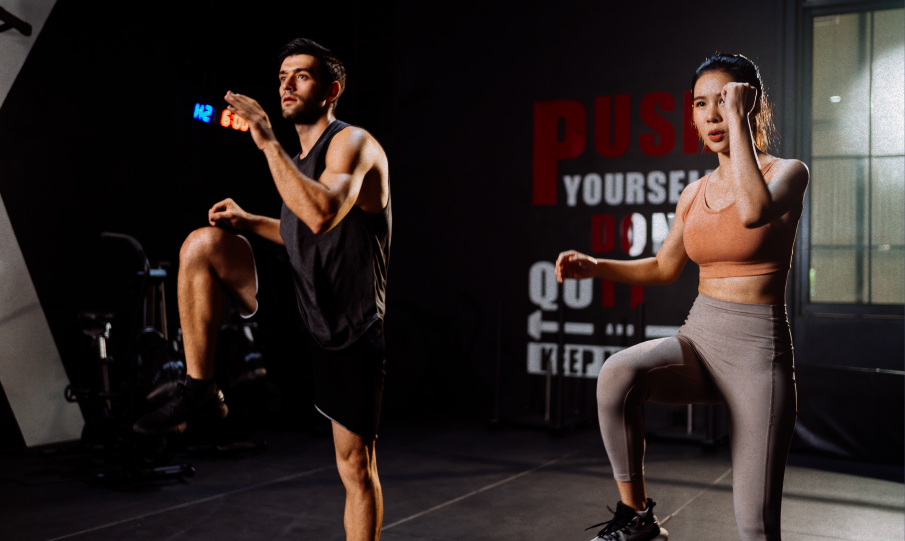2023 looks like a good year for fitness, after three years in which the sector has been hit hard by the pandemic, high energy costs and the paradigm shift in the industry. Polarization continues to make its way: more and more gym chains are buying smaller ones; at the same time, new business models such as small fitness or yoga studios are opening in urban centers.
The fitness trends for 2023 have already been published, according to the ACSM (American College of Sports Medicine), as they have been doing in recent years.
Fitness trends 2023 respondent profile
Responses were received from nearly every continent, including Australia, Brazil, Barbados, Canada, China, Colombia, Costa Rica, Dominican Republic, Finland, France, Germany, Greece, Japan, Jordan, India, Indonesia, Italy, Kenya, Libya, Malawi, Mexico, Nigeria, Norway, Pakistan, Peru, Philippines, Portugal, Romania, Russia, Saudi Arabia, Singapore, South Korea, Spain, Sri Lanka, Sweden, Turkey, United Kingdom, Vietnam and the United States, among many others.
The demographics of the respondents included 58% female (41% male) with a wide variability of ages, with 55% of all respondents having more than 10 years of industry experience and 29% having more than 20 years of experience.
Twenty percent indicated that they were either full- or part-time personal trainers. 64% indicated full-time and 28% part-time (less than 20 hours per week).
Total survey responses were 3,735. The response rate was 3%, higher than previous years.

The 20 fitness trends in 2023
For yet another year, we see a repeat of most of the trends in the global top 20. Let's take a look at the top 10 to see how these trends can have a direct impact on all fitness professionals and what you should do to adapt to them... before your competition does!
1. Wearable technology (wearables).
2. Training with free weights.
3. Body weight training.
4. Fitness programs for older adults.
5. Functional Fitness Training.
6. Outdoor Fitness Activities (outdoor fitness).
7. High Intensity Interval Interval Training (HIIT).
8. Weight loss exercise programs.
9. Hiring of "certified" professionals.
10. Personal training.
11. CORE training.
12. Circuit training.
13. Home gym training.
14. Group training.
15. Exercise is Medicine" initiative.
16. Lifestyle Medicine.
17. Yoga.
18. Exercise regulation of fitness professionals.
19. Health and Wellness Coaching.
20. Exercise Apps for mobile devices.
SOURCE: ACSM
Wearable technology
One of the trends that has been going strong over the past few years has managed to move to No. 1: wearables.
This trend includes heart rate monitors, smartwatches and GPS tracking devices, as well as activity tracking devices that can track heart rate, calories, sitting time, sleep and more. Wearable technology has been the No. 1 trend since it was introduced in the survey in 2016, except in 2018 (No. 3) and 2021 (No. 2).
These devices are used as a step counter and heart rate monitor, and can track body temperature, calories, sitting time, sleep time and more. At first, the accuracy of wearable technology was questioned, but these issues seem to have been resolved. New innovations include blood pressure, oxygen saturation, body temperature, respiratory rate and electrocardiogram.
In short, all devices that can measure physical activity are in the spotlight for customers, athletes and operators. That is why it is important to have technology associated with your business model.
From measuring heart rate during a HIIT class to being able to analyze the weight moved during a strength session, all the options you offer your customers to record their activity will motivate them and make them feel committed to your business.
Free weight training
This activity incorporates the use of barbells, dumbbells and/or kettlebells to improve or maintain muscular fitness by modifying repetitions, sets, tempo, load and exercise selection to achieve specific muscular fitness goals.
Surveys conducted prior to 2021 included a category described as "strength training." But of course, that description was too broad and we all know that in recent years the free weight zone is gaining meters and followers in gyms. That's why they decided to create this specific category, and it has worked out well. Free weights are in fashion.
This category includes free weights, barbells, kettlebells, dumbbells and medicine ball classes. Free weight training debuted at No. 4 in 2020 and dropped to No. 8 in 2021, and No. 4 in 2022.
Body weight training
Since the pandemic forced us to train at home, this workout has remained in the top 10, although it had been appearing in the top spots since its inclusion in 2013.
According to the ACSM, this workout uses minimal equipment and space, making it an economical and functional way to exercise. It is defined as a combination of movements in different planes, using body weight as the main resistance.
Training programs for seniors
It is a trend that emphasizes and caters to the fitness needs of boomers and older generations. People are living longer, working longer and want to stay healthy and physically active throughout their lives.
This trend is making a comeback after being in the top 10 in 2007 (the #2 trend) and dropping to #11 for 2017. In 2018, fitness programs for older adults were trending #9, #4 for 2019, #8 for 2020, #9 for 2021 and #11 in 2022.
Boomers (and older generations) in general have more money than younger generations, and fitness clubs may be able to capitalize on this growing market. Changing the ambiance (including lights and type of music) of gyms to be more welcoming to older generations during off-peak hours is the type of trend that seems to be catching on in commercial clubs.
-1.jpeg?width=500&height=334&name=AdobeStock_487534058%20(1)-1.jpeg)
Functional fitness training
Training to improve balance, coordination, functional strength and endurance to improve activities of daily living. It is based on executing movements that we perform in our daily lives, but in a controlled environment, such as the stride, squat or push-up.
The functional training category first appeared in the survey in the No. 4 spot in 2007, but fell to No. 8 in 2008 and No. 11 in 2009. It reappeared in the top 10 in 2010 at #7 and in 2011 as #9. In 2012, functional fitness was trend #10 and ranked as high as #8 for 2014, but dropped to #14 for 2021 and for 2022.
This trend typically focuses on the use of strength training to improve balance, coordination, muscular strength and endurance to improve activities of daily living, typically for older adults, but also in clinical populations.
You May Also Like
These Related Stories

Trainingym Rewards has arrived, gamification brought to the fitness business.

How to manage a personal training center



No Comments Yet
Let us know what you think